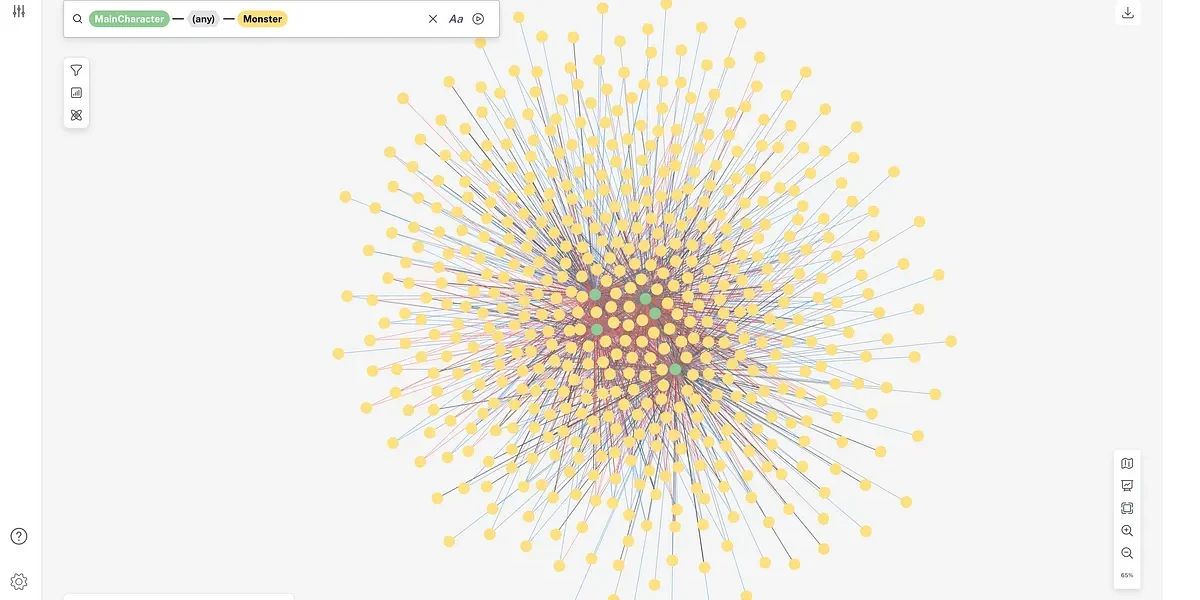Visualizing Enterprise Architecture: 5-Minute Interview with Jessica Dembe & Patrick Elder, Blackstone Technology Group

Senior Manager, Content, Neo4j
4 min read

“Native visualization was something that stood out to us, and we had struggled trying to do the same thing with other tools,” said Patrick Elder, Product Architect at Blackstone Technology Group.
Enterprise architecture connects numerous IT assets using information from diverse systems. Once it’s possible to visualize all those connections across disparate data stores, decisionmakers see opportunities for optimization and cost reduction.
In this week’s five-minute interview (conducted at GraphConnect New York) we discuss with Patrick and Jessica Dembe, Front-End Engineer, how Blackstone Technology uses Neo4j to rapidly enable its government client visualize its enterprise architecture as the first step in digging in and analyzing its use of IT assets.
Talk to us about how you use Neo4j with your government client.
Patrick Elder: Our client is in the Enterprise Architecture Office, so they’re looking for a way to visualize how systems are related within an organization.
The data that they aggregate is all about showing different parts of the organization and how it ties together, so a lot of our job is stitching together information from disparate sources and different kinds of data.
For example, we connect systems with the technologies they use, how they’re funded, what types of activities and capabilities they have, what mission they support, what organization they’re in – all those kinds of things.
We saw Neo4j as a natural fit given that use case, and the ability to visualize
connections natively within the tool was really attractive to us.
What made you choose Neo4j?
Jessica Dembe: The way that you could visualize relationships and how things are connected to each other. All the systems, investments, everything, and how it is all connected together.
Elder: Native visualization was something that stood out to us, and we had struggled trying to do the same thing with other tools.
What we were really excited by was the next step. Once we get beyond the initial visualization, what is the analysis that’s going to be done? The fact is that our clients can’t even ask the question yet because without Neo4j, they can’t even see what’s possible. That’s what is really exciting as we take the next steps with Neo4j.
What have been some of your most surprising results while using Neo4j?
Elder:
I think the biggest thing for us was the “Wow” factor – how quickly we were able to put this together, how fast we were able to put our data into Neo4j from a relational database (RDBMS), create something visible, and show it to our clients. They were really impressed by that.
If you could start over with Neo4j, taking everything you know now, what would you do differently?
Dembe: I think we would start with iconography for different investment areas, using icons in visualizations; that’s something we’re looking to implement.
Elder: One of the things that I’ve really noticed here at GraphConnect is all the different types of analysis and how people are applying different tools to the graph database.
From our side, I think that’s something that we could have gone to the client first and said, “The visualization is something that we can show you right away, but what is the analysis you want to do?” And maybe that could help inform us on how to design the database with different kinds of queries and different tools that we could bring in to deliver that in the first release.
What do you think the future of graph technology looks like in the federal space?
Elder: Certainly from where we sit in enterprise architecture, graph technology is going to be really valuable. It’s a type of analysis that our clients need to do that they don’t even conceive as possible yet.
I’m thinking about what it could do for document analysis, which is a very manual process, using keyword searches and SharePoint. This can now be something that we can operationalize with Natural Language Processing and give the analysts ten documents to look at instead of 1,000.
Dembe: I agree. It wasn’t until I got here that I saw that’s possible, and I’m pretty sure once we bring that back, they will want to see what we can do with that capability.
Is there anything else you’d like to add?
Elder: Overall GraphConnect has been a great experience. There’s been a lot of learning for us as we’re relatively new to Neo4j, and we’ve had the opportunity to see some more mature projects and bigger datasets. In our environment, our dataset’s relatively small. Here at GraphConnect, we heard about billions of nodes and relationships – we’re orders of magnitude smaller than that.
We’ve seen that, even with a larger dataset, there’s so much power and efficiency there that we really can’t tap any other way.
Dembe: From my vantage point, I’ve had so much feedback on how you are visually representing data. It’s given me a lot to think about when I get back in terms of how I can model data and the best way to approach it.
Want to share about your Neo4j project in a future 5-Minute Interview? Drop us a line at content@neo4j.com








